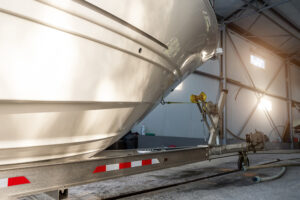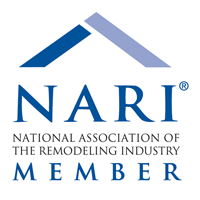 Water damage is one of the most common and costly problems homeowners face. This issue is especially prevalent in garages, which often lack proper drainage systems. Without these systems, garages can become flooded, leading to structural damage and costly repairs. In this blog post, we will explore the importance of protecting your garage from water damage, introduce various drainage systems and provide practical tips for maintaining a dry and secure garage. Let us help you protect your garage against water damage and learn how to save thousands of dollars in potential repair costs.
Water damage is one of the most common and costly problems homeowners face. This issue is especially prevalent in garages, which often lack proper drainage systems. Without these systems, garages can become flooded, leading to structural damage and costly repairs. In this blog post, we will explore the importance of protecting your garage from water damage, introduce various drainage systems and provide practical tips for maintaining a dry and secure garage. Let us help you protect your garage against water damage and learn how to save thousands of dollars in potential repair costs.
Understanding the Risks of Water Damage
Water damage in your garage can lead to a host of problems. First and foremost, standing water can cause structural damage to the foundation and walls of your garage. Over time, this can weaken the structural integrity of the entire building.
In addition to structural issues, water damage can lead to mold growth, which poses serious health risks to you and your family. Mold thrives in damp environments and can spread quickly, causing respiratory issues and allergic reactions.
Finally, water damage can ruin personal belongings stored in the garage. Items such as tools, sports equipment and seasonal decorations can be ruined by prolonged exposure to moisture.
Common Causes of Garage Water Damage
There are several factors that can contribute to water damage in garages. One common cause is poor drainage around the foundation of the house. When water is not properly directed away from the structure, it can seep into the garage and cause damage.
Another common cause of water damage is a lack of proper ventilation. Garages that are not properly ventilated can trap moisture, leading to condensation and water buildup.
Lastly, damaged or improperly installed gutters and downspouts can cause water to accumulate around the garage. This excessive water can then find its way inside, causing damage over time.
The Role of Proper Drainage Systems
Proper drainage systems play a crucial role in preventing water damage in your garage. These systems are designed to redirect water away from the foundation and prevent it from entering. By installing an effective drainage system, homeowners can protect their garages from water damage and maintain the structural integrity of their homes.
There are several types of drainage systems available, each with its own advantages and disadvantages. Let’s explore some of the most common options so you’ll know how to choose the best system for your needs.
Types of Drainage Systems for Garages
-
Gutters & Downspouts
Gutters and downspouts are essential components of a garage drainage system. They are designed to collect rainwater from the roof and direct it away from the foundation of the garage. Properly installed and maintained gutters and downspouts can help prevent water from seeping into the garage and causing damage. Gutters should be installed along the edge of the roof, with downspouts placed at strategic locations to direct water away from the garage. It is important to ensure that gutters and downspouts are properly sized and pitched to handle the volume of water they will receive. Regular cleaning and maintenance are also necessary to keep gutters and downspouts free of debris and functioning properly.
-
French Drains
French drains are a popular choice for homeowners looking to protect their garages from water damage. These drains consist of a trench filled with gravel and a perforated pipe that redirects water away from the foundation.
French drains are effective at preventing water from pooling around the garage and are relatively easy to install. However, they do require regular maintenance to ensure they remain free of debris and functioning properly.
-
Channel Drains
Channel drains, also known as trench drains, are another effective option for garage drainage. These drains consist of a long, narrow channel that collects water and directs it away from the garage.
Channel drains are best for garages with sloped driveways, as they can catch and redirect water flowing towards the garage. While channel drains can be more expensive to install than French drains, they are highly effective and require less maintenance.
-
Sump Pumps
For garages prone to flooding, sump pumps can provide an additional layer of protection. Sump pumps are installed in a pit beneath the garage floor and work by pumping water out of the garage and away from the foundation.
These pumps are especially useful in areas with high water tables or heavy rainfall. While sump pumps can be more expensive to install and maintain, they offer peace of mind and added protection against water damage.
Choosing the Right Drainage System
When selecting a drainage system for your garage, it is important to consider several factors.
- Assess the specific needs of your property. This includes the slope of your driveway, the amount of rainfall in your area, and the type of soil around your home.
- Consider your budget. While some drainage systems may be more expensive to install, they can offer long-term savings by preventing costly water damage and repairs.
- Consult with a professional. A contractor or drainage specialist can help you determine the best system for your needs and ensure it is installed correctly.
Installation Tips for Drainage Systems
Proper installation is key to the effectiveness of any drainage system. When installing a French drain, be sure to dig the trench deep enough to allow for proper water flow and use high-quality gravel and perforated pipe.
For channel drains, ensure the channel is level and properly sloped to direct water away from the garage. Additionally, use durable materials that can withstand the weight of vehicles and heavy traffic.
When installing a sump pump, be sure to place the pump in the lowest point of the garage floor to ensure it can effectively collect and pump out water. Regularly check and maintain the pump to ensure it remains in good working condition.
Maintaining Your Garage Drainage System
Regular maintenance is essential to keep your garage drainage system functioning properly. For gutters, downspouts and french drains, regularly inspect and clean out any blockages.
Channel drains should be checked for clogs and cleaned as needed. Be sure to inspect the channel for any cracks or damage and repair as necessary.
Sump pumps should be tested regularly to ensure they are working properly. This includes checking the float switch, inspecting the discharge pipe and cleaning the pump as needed.
Additional Tips for Preventing Garage Water Damage
In addition to installing a proper drainage system, there are several other steps homeowners can take to protect their garages from water damage. This includes sealing any cracks in the garage floor and walls, ensuring proper ventilation and keeping gutters and downspouts clear of debris.
Regularly inspect the area around your garage for signs of water damage, such as damp spots or mold growth. Address any issues to prevent further damage.
Consider using water-resistant materials for flooring and walls in your garage. This can help minimize the impact of any water that does find its way inside.
Protect Your Investment
Protecting your garage from water damage is essential to maintaining the structural integrity of your home and safeguarding your belongings. By understanding the risks, choosing the right drainage system and taking preventative measures, you can keep your garage dry and secure.
Remember, a small investment in a proper drainage system can save you thousands of dollars in repair costs down the line.









